Every day, fishing is an adventure. Today, Mauro and I went to the Slough, hoping to key in on what we call the “Decker hatch,” chasing the 500,000 smolt released by the Issaquah hatchery, through Lake Sammamish and into the Slough where they get concentrated. Our theory is that, naturally, the big rainbows and cutthroat in the lake will key in on these tasty morsels. Last week Jason (Decker, who figured this whole thing out and thus the eponymous naming) and I tested this theory by fishing the lake by the mouth of the creek, watched over by a family of eagles nesting nearby. I took two nice cutts, but after four hours of rowing around, the instantaneous gratification we sought remained aloof.
I gravitated to this theory of the fish keying on a single food source because generally, fishing the Slough is maddening. Being the only west side spring creek I’ve discovered, the Slough is incredibly fecund. Like most fertile rivers, though, it’s technical. More technical than I care to be. Mikey dialed it in with chironomids, which I will not fish. Craig fishes scuds, which I cannot see to tie on. Plus it’s nymphing anyway.
Mauro tied up some very nice smolt flies and the water was high and fast. We started under the 85th street bridge where Mauro recently caught a monster trout that I had stalked for 5 years, in vain. I fished at dawn. I fished at noon. I fished at midnight. Mikey caught flies in his hat and tied them on the streamside, and nada. Therefore, I defer to Mauro on such things as what to fish when.
Below the bridge, is a little island, with a deep fast channel on the far side. At the island I had one hook up, but I failed to follow my own hard-won lessons on cutthroat and tried to set the hook. I missed every cutthroat for years until one day, I fished to spawning brookies on a white sand bar. A fish would come up and smash a fly. If I kept stripping, it would return to its lie. If I let the rod tip drop, the fish would circle once, come back and pick it up. Once I applied that in the river, I started catching sea-runs. But reminding yourself in that split second of hooking up not to strike is like trying to keep your eyes open when you sneeze.
We fished a bunch of flies around the island. We could see the pike minnows there, but they would not deign to notice our offerings. Downstream of the island, they have regroomed the stream from a straight drainage ditch to a more natural, meandering waterway, and it sweeps around a little park, so we continued down to the bend where we’ve often had good luck before. As we got there, an osprey flew over us. It was so huge that, at first, I thought it was an eagle. I’ve never seen an osprey that size.
I was tying on a fly when I heard a huge smash. When I looked up, the osprey was taking off. Mauro said “At least we know there are fish here.” To which I replied drolly, “Were fish here.” In my experience, if the predatory birds are there—be they herons, eagles, or ospreys—the fish are hard to find. At any rate, I walked upstream and fished down, eventually walking out on a log and casting to a promising seam, with Mauro graciously following behind. Twice more in the next 15 minutes the osprey returned and smashed into the water in the same spot, feet from the log. His nest must’ve been full of flopping fish. I mentioned that if this was a regular thing, it would be more worthwhile to return with a camera than a fishing pole.
I had about given up, having pruned a few trees to keep my flies. Right then Mauro mentioned “You catch fish here when you see them rising. Look downstream, there are ten rises.” Like magic, a fish rose 150 yards away. Then, suddenly they were rising all around Mauro, many less than a rod length away, none more than three, often in less than two feet of water. After what must have been at least five minutes, we noticed that there was bread floating in the water. At first little chunks, then whole slices. They were collecting in this little micro-eddy we were standing in. Apparently the osprey had been chumming for fish. Twice, I saw fish come up and hit entire slices of bread. They were so excited they kept coming up despite four attacks by the bird and Mauro and I running every fly we had through them. Then, as suddenly as it had started, it was over, despite there still being a bunch of bread loafing around in the current.
Viscount Grey of Fallodon wrote:
On days of failure an angler may be said to go through four stages of feeling. He begins with Expectation: this is presently modified to Hope: after Hope has been long deferred the angler subsides into the stage of Resignation: finally as the day draws to a close he sinks into Despair.
I would say we Expected smolts, Hoped when we saw the rises, got Resigned to the fact they weren’t taking what we had, and finally Despaired of catching any fish. It’s bad enough when you think the river is full of fish and you can’t catch them. But when water six feet away is boiling with them and you can’t get a bite, it’s downright emasculating.
I was really hoping to get lucky with the Decker Hatch and wasn’t prepared to get technical, but I never, ever even considered casting bread upon the waters. Can anybody out there tie a good white bread fly?




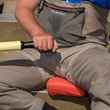
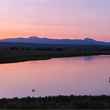

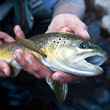






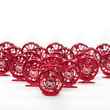
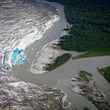



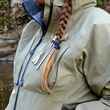
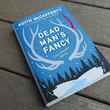




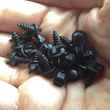



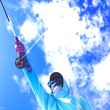

Comments